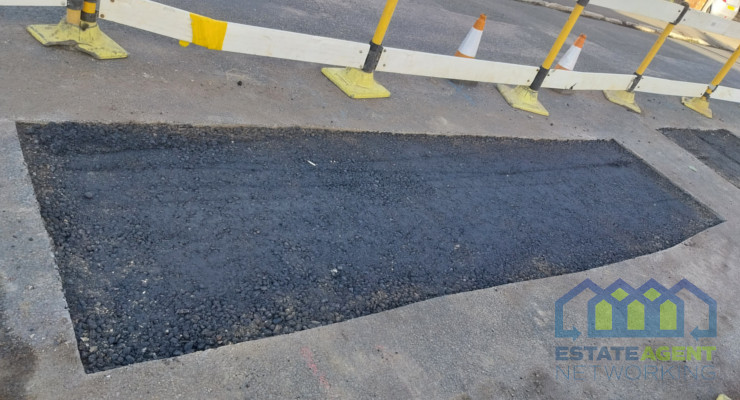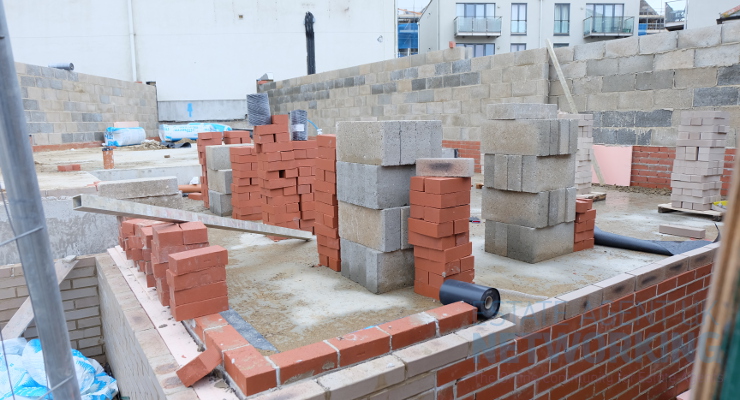No sign of usual autumn price bounce as London drag continues
- Price of property coming to market falls by 1.2% (-£3,660) this month, the first monthly fall at this time of year since 2013
- National average price fall exacerbated by London continuing to readjust and smaller falls in the other southern regions
- Potentially good news for buyers’ finances with average earnings of +2.1% now almost double annual property price increases of +1.1% – the lowest annual rate of house price increase since February 2012
- Number of sales agreed is higher than this time a year ago in all regions, up nationally by 4.8%, showing that demand remains strong for the right property at the right price
The usual Autumn price bounce has so far failed to materialise, with a fall of -1.2% (-£3,660) in the price of property coming to market. This is the first fall at this time of year since 2013, though the national average fall has very much been exacerbated by a large -2.9% monthly drop in London, and smaller falls in all other southern regions. The national monthly drop when removing London would be a much smaller -0.5%. The London drop is being driven by its continued readjustment particularly in the higher-end boroughs, with falls in five out of the six most expensive boroughs this month.
Miles Shipside, Rightmove director and housing market analyst comments: “As we enter the Autumn selling season it is usual to see estate agents advising new-to-the-market sellers to push up their asking prices. But this year all four southern regions have seen new sellers on average asking less than those of a month ago, reducing the national rate of increase. There were Autumn price bounces nationally in 2014, 2015 and 2016, but the south of the country has turned this month into a bit of a damp squib , whilst some northern regions are still showing marginal signs of upwards price pressure. Estate agents are clearly advising many sellers that they have to lower their price expectations to fit in with buyers’ stretched financial resources, with that price compromise hopefully generating extra buyer interest.”
With the price of property coming to market having increased every year for the last six years, most buyers have seen their buying power eroding away. But annual average wage growth is now outstripping the annual rate of price increase in newly-marketed property. The Office for National Statistics has reported average annual wage increases running at +2.1% for both the second quarter of this year and the month of July, while the price of property coming to market is now growing at just +1.1%. This is the lowest annual rate of house price increase since February 2012 when it stood at +0.7%.
Shipside says: “It’s unavoidable that prices will eventually reach a limit, and having gone up every year for the last six years, the pace of price rises for newly-marketed property is now dawdling at just + 1.1%. Interest rates cannot realistically drop any further to help buyer affordability, but the potentially good news for buyers’ finances, which have been under attack for years, is that there is some relief from the wage-rise cavalry. Average wage rises are now running at nearly double the annual rate of property price rises, and the longer any meaningful differential is maintained then the greater the improvement in buyer affordability. Having finally turned the tables to potentially improve their buying power, buyers will now be hoping that it is not eroded again by an interest rate rise or rampant consumer price inflation.”
Whilst affordability constraints are a major factor in the slowing pace of price rises, demand for the right housing at the right price remains strong due to historic under-supply. Some discretionary movers are deterred by lack of choice and the cost of moving, and the political outlook remains uncertain. However, in spite of these factors the numbers of sales being agreed by estate agents are 4.8% higher than the same period a year ago, with all regions being up, including London which is performing strongly at 5.6% up despite its large monthly price fall. Looking at the market by property sector, sales agreed for second-stepper homes, typically those with three bedrooms, are up 6.7% on last year, with this sector also seeing the largest annual price increase at +2.9%.
Shipside observes: “The housing needs of growing families are harder to postpone than other more discretionary moves, and this has resulted in average asking prices for typical second-stepper type homes increasing at over twice the overall national average rate. With competition among lenders to lend, increasing wages and the lowest level of unemployment since 1975, buyers are still keen to buy if the property is worth the money and well presented. If more sellers appreciate that sensible pricing is the best way forward, then this will help to maintain good levels of buyer activity despite the uncertain political outlook.”
Estate Agents’ Views
Robert McLaughlin, Sales Director at Kinleigh Folkard & Hayward in London, said: “We’ve advised sellers in many locations across London that the current market requires sensible and realistic pricing. Pockets of high demand still exist but tend to be concentrated around specific streets, schools and transport hubs. Transaction volumes are increasing and properties priced realistically continue to sell well, but those looking to enter the market should speak to a local agent who really knows their patch in order to get an understanding of local activity and demand.”
Roger Collings, Branch Manager at RE/MAX in Prime Central London, said: “Between 2009 and 2015, the large majority of property buyers were cash buyers, although currently not so much. In the current market sales volumes have dropped in Prime Central London, and the market has softened to some degree. We are finding that most homeowners are not in any hurry to get rid of their properties, which has resulted in fewer listings available to buyers and fewer sales. In 2009 until 2015 the Central London market was inundated with investors looking to purchase property as a way to invest their money in a safe financial environment. However, since the introduction of the 3% surcharge on stamp duty paid by investors, along with the uncertainty as to how Brexit will impact London’s property market, investors have been standing on the side-lines. We are beginning to see more and more investors venturing back into the market, but we are still a long way from the volumes we saw pre-referendum . There are markets outside of Central London that are still buoyant with local buyers.”
Mark Manning, Director of Manning Stainton in Leeds, Harrogate, Wetherby and Wakefield said: “The market across our region experienced a fairly traditional summer slowdown but interestingly managed to outperform our results from the same period one year ago. There has been a 10% increase in the volume of new seller enquiries over the last 3 months in contrast with the same period in 2016 and a more modest 2% increase in the number of new buyer registrations, but an increase nonetheless. All of this equates to a market which continues to offer good results and steady price growth as we head into the second busy period of 2017. And with a continuing appetite amongst mortgage providers to lend and a relative lack of stock in the market it’s difficult to see how this trend will change in the short term across our region. ”









